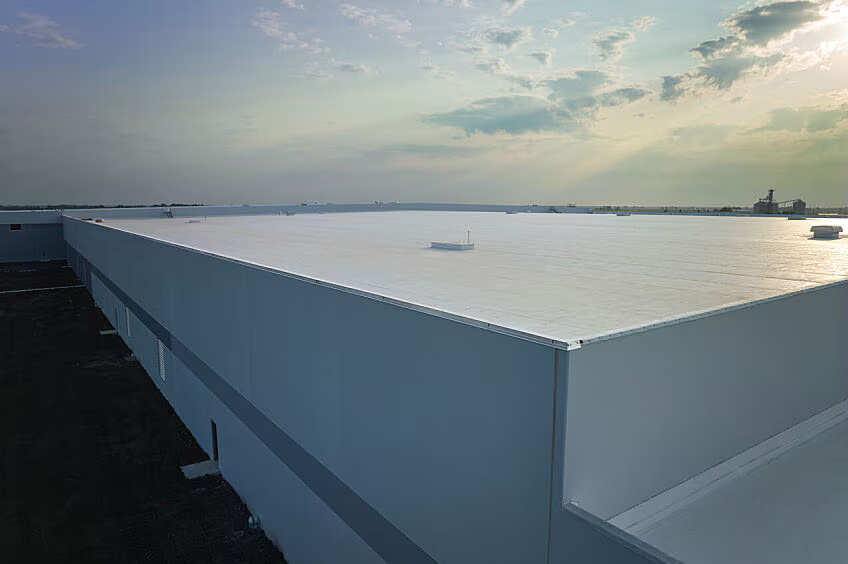
When designing your next low-slope roof assembly, there are a number of single-ply roofing attachment methods to consider. Whether you choose a TPO, PVC, or EPDM membrane, the attachment method you select will typically be influenced by the building type and location, the rest of the roof assembly, and the construction schedule and cost. The most common single-ply roofing attachment methods are mechanical, induction-welded, adhered, and ballasted. Depending on the unique circumstances of your project, it may also make sense to employ a hybrid approach, or a combination of methods. Let’s explore the main features, as well as the pros and cons, of each.
Mechanical attachment is achieved using mechanical fasteners (usually screws) set through metal plates designed to help spread the force imposed on the membrane and make the attachment more secure. The type and size of fastener is determined by the roof deck material and thickness of the total roof assembly. The fastener pattern and spacing is specified by the roofing manufacturer based on lab assembly testing and is often subject to local code requirements1.
Mechanical attachment is the most common single-ply roofing attachment method since it is fast, economical, and can be installed in various temperatures. However, in conditions of high wind uplift, or where the roof deck is not airtight, membranes installed mechanically may be subject to billowing. Billowing is caused by air that is pulled into the roof assembly, often by crosswinds providing an uplift force over the roof, causing the membrane to lift and flutter. In addition, exposed fasteners could be subject to damage from hail or heavy foot traffic if those conditions are present.
Finally thermal bridging (the transfer of heat between the interior and exterior of the building) through the fasteners could also be an issue depending on exterior climate and interior building conditions. You can find more information on the impacts of thermal bridging through fasteners here.

Maribel Sargent is a seasoned writer with a deep-rooted passion for the roofing industry. With over 7 years of experience crafting informative and engaging content, she has established herself as a trusted authority in the field. Her expertise lies in translating complex roofing concepts into easily understandable articles for both industry professionals and homeowners.


